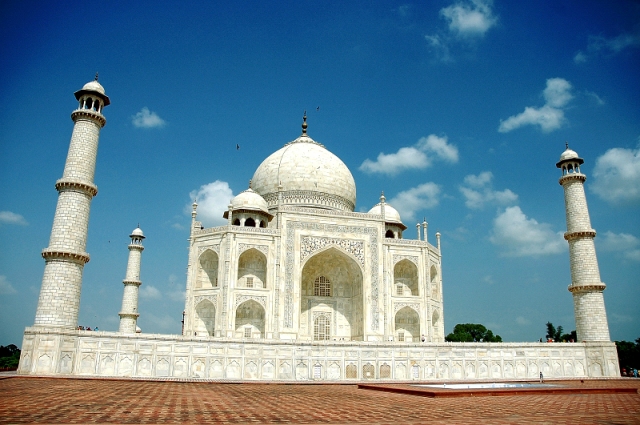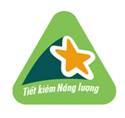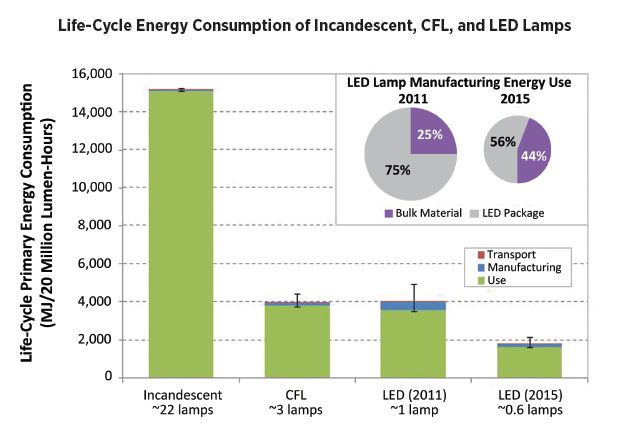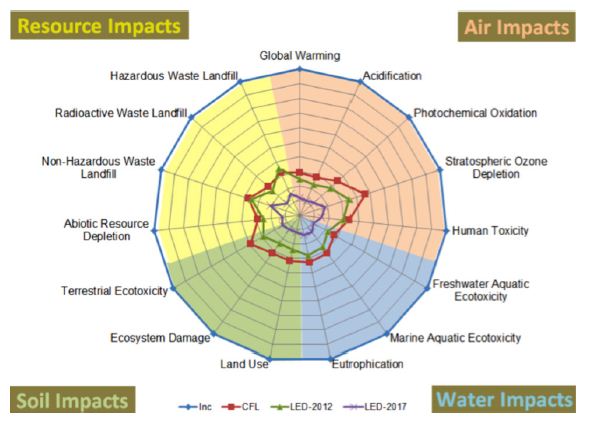In this issue we provide information on the next lites.asia meeting in India; the forthcoming IEC maintenance meetings in Beijing where the proposed lites.asia CFL technical specification will be discussed; an update on progress with the regional collaboration projects agreed in the last lites.asia meeting in Hanoi; and an update on recent developments in LED performance measurement and life cycle analyses that may be of interest to lites.asia members.
We are also pleased to begin a series of special features on national standards and labelling programs from around the region beginning here with Vietnam.
Sixth lites.asia meeting, New Delhi

The sixth lites.asia meeting will be held in New Delhi, India on 2 and 3 October 2012 and will focus on:
- Developments in IEC and other international and regional lighting standards, particularly the outcomes of the IEC and IEA 4E SSL expert meetings to be held in Beijing in September 2012 (see IEC article below).
- Updates on lites.asia regional collaborative projects giving details of progress on the projects agreed at the Hanoi meeting, including potential capacity building/training in lighting laboratories, building a lighting communications library and surveillance of label compliance in participant countries (see progress on collaborate projects below).
- The support available to national policy makers and technical staff from a number of regional and global centres.
- Mercury in lighting and the status of mercury containing lamps/CFLs within the negotiations on the proposed globally binding mercury treaty.
- Updates on the latest policy developments in lighting from participating countries
In addition to the main lites.asia meeting, a special session will be held on 4 October to inform Indian lighting suppliers of the standards, labelling and other requirements necessary to comply with national regulations in a number of lites.asia countries. Both events are timed to coincide with the international lighting exhibition and conference, Light India 2012, which begins on 5 October 2012.
IEC TC34 project team meetings, Beijing
The next IEC TC 34 Working Group meetings will be hosted by the National Lighting Test Centre (NLTC) in Beijing, China from 24 to 27 September 2012.
A summary of the meetings is as follows:
- IEC SC34A Working Group, PRESCO – Monday 24 September 2012
- IEC SC34C Working Group, COMEX – Tuesday 25 September 2012
- IEC SC34A Working Group, LUMEX and IEC TC 34 AG 1 (CSM) – Wednesday 26 September 2012
- IEC SC34A Working Group, EPC – Thursday 27 September 2012
The meetings on Monday and Wednesday focusing on lamps and LEDs are likely to be of most interest to lites.asia members. In particular, the lites.asia draft performance limits for CFLs will be submitted (in the form of a preliminary draft technical specification) for consideration at the PRESCO meeting on 24 September (these draft performance limits are available here). Please advise your National IEC representative that these proposals are being made and encourage them to provide support.
Progress with lites.asia collaboration projects
At the recent meeting in Hanoi it was agreed that lites.asia members would seek to collaborate on four projects:
- National labelling compliance surveys: National surveys to determine levels of labelling compliance in the national markets and to facilitate improved communication between national regulators and suppliers to establish reasons for current non-compliance and to improve levels of compliance in the future.
- Training for testing laboratory staff: Increasing the capacity of a number of lighting laboratories around Asia through delivery of a series of training programmes, staff exchanges and/or round-robins.
- ‘Meeting the Suppliers’ events: A series of events to improve supplier knowledge of the detailed regulations for supplying lighting products to a range of Asian countries, and the required actions to comply fully with these regulations.
- Creation of a ‘Communications Library’: The creation of an on-line library of information to enable stakeholders to review existing consumer guidance information on lamp selection, application and equivalence; how labelling and compulsory and voluntary packaging information is currently displayed; etc.
Two of these projects are already underway with the specification for the on-line library recently completed and a pilot ‘Informing the Supplier’ event scheduled for 4 October 2012. An update on all projects will be given at the next meeting in Delhi (see the sixth lites.asia meeting article above) including presentation of a beta-version of the communications library.
LED Updates
A number of publications have been made in recent weeks related to LED energy and environmental testing and impacts. The following publications are likely to be of interest to lites.asia members:
lites.asia LED consumer guidelines
Having incorporated comments from a number of lites.asia members, the draft ‘consumer guidelines for buying quality LEDs’ discussed at the Hanoi lites.asia meeting have been finalised. These guidelines are designed to provide governments, suppliers, retailers and other stakeholders with an independent and unbiased basic text to use in publications to guide consumers in selecting a good quality LED product for appropriate applications. A copy of the draft guidelines is available here.
4E SSL Annex draft tiers of performance for streetlight luminaires – request for comments
Advising governments on quality assurance is one of the key tasks of the IEA’s 4E SSL Annex. Consequently, the Annex is working to clarify the needs of governments and consumers, to determine realistic expectations of SSL technology.
Tiers of performance developed by the Annex identify a suite of metrics and values for minimum performance of SSL energy efficiency, lighting quality, and safety. The Annex is now seeking comments on the draft performance tiers for streetlight luminaires. The draft performance tiers are available on the 4E SSL website and any comments should be submitted in writing direct to the SSL Annex at . If you would like to give feedback on these performance tiers, we would encourage you to do so before the deadline on 15 October 2012.
US Department of Energy LED energy and environmental life cycle assessment
It is recognised that LED lighting has the potential to save energy and improve lighting quality and performance beyond that of many conventional lighting technologies. However, until recently there was little research into the full energy and environmental impacts of a lighting technology over the entire life cycle. Two recent reports from the US Department of Energy present the results of the first two instalments of a three part study investigating these impacts.
The first, Life-Cycle Assessment of Energy and Environmental Impacts of LED Lighting Products Part 1: Review of the Life-Cycle Energy Consumption of Incandescent, Compact Fluorescent, and LED Lamps, draws together an analysis of existing life-cycle assessment (LCA) studies to compare the total life-cycle energy consumed by LED and other lamp types.
The key results of this are summarized in the following graph:
The second, Life-Cycle Assessment of Energy and Environmental Impacts of LED Lighting Products Part 2: LED Manufacturing and Performance, provides a more detailed and conservative assessment of the manufacturing process of an LED product and a comparative LCA with other lighting products, based on improved manufacturing analysis and taking into consideration a wider range of environmental impacts.This study confirms that energy-in-use is the dominant environmental impact, with the 15-watt CFL and 12.5-watt LED lamp perform better than the 60-watt incandescent lamp. A summary of the findings is presented in the figure below:
Further information and copies of both reports are available on the US DOE website.
Dates for your diary...
IEC TC 34 maintenance team meetings
24-27 September 2012, Beijing, China
The sixth lites.asia meeting will be held 2-3 October 2012 in conjunction with Light India 2012
2-3 October 2012, New Delhi, India
A special lites.asia session to inform lighting suppliers of national standards in a number of lites.asia countries.
4 October 2012, New Delhi, India
The first Indian international lighting exhibition
5-8 October 2012 – New Delhi, India
3rd International Off-Grid Lighting Conference and Trade Fair
13-15 November 2012 - Dakar, Senegal
Special Focus: Lighting Standards and Labels in Vietnam
Discussion at lites.asia meetings has consistently highlighted the value in sharing information on individual country approaches to standards and labelling. Therefore lites.asia has decided to include an occasional section in the newsletter summarising the lighting standards and labelling regime in countries across the Asia Pacific region. The first of these special features focuses on Vietnam.
Background
The Vietnam National Energy Efficiency Program (VNEEP) was released in 2005 and sets a comprehensive program of work (for the period 2006 to 2015) to promote energy efficiency in Vietnam. Several of the six components of the program of work contain elements that are of relevance to energy efficient lighting.
Lighting phase-out
Currently Vietnam does not have any specific plan or policy to completely eliminate inefficient lighting products, but in future policy makers will gradually restrict and remove those products that do not meet performance requirements. However, Decision No. 51/2011 (promulgated by the Prime Minister on 12 September 2011) states that from 1 January 2013, importation, production, and circulation of tungsten light bulbs with capacity higher than 60W will be prohibited. From 1 January 2014, import and production of lamps that do not meet minimum energy performance standards will be prohibited.
From 2010, the UNEP (with financing from the GEF) has been supporting Vietnam to promote a large scale market transformation towards efficient lighting.
Test method and performance standards
The regulatory and national standards body is the Ministry of Science and Technology (MOST), Directorate for Standards, Metrology and Quality (STAMEQ). STAMEQ’s national standards development is mainly performed by Vietnam Standards and Quality Institute (VSQI), which is the secretary of all national technical committees established by the Ministry of Science and Technology for national standards preparation.
Test method standards
Vietnam is an associate member of the IEC, with STAMEQ operating as the National Committee. Vietnamese representatives have recently begun to take part in TC34 (lighting) related IEC committees. However, since 2006 it has been a priority to adopt IEC standards as Vietnamese standards (TCVNs).
Vietnam currently has test method standards (adopted in their entirety from the appropriate IEC standards) in place for lighting products, including for the performance requirements and safety specification of:
- Tungsten filament lamps for domestic and similar general service lighting.
- Double- and single-capped fluorescent lamps.
- Ballasts for fluorescent lamps.
- Self-ballasted lamps for general lighting service.
In addition, Vietnam has national standards in place for lighting products, including:
- High efficiency lighting products – Part 2: Methods for determination of energy performance.
- Compact fluorescent lamps – Energy efficiency.
- Electronic ballasts for fluorescent lamps – Energy efficiency.
- Electromagnetic ballasts – Energy efficiency.
- Tubular fluorescent lamps – Energy efficiency.
A Mandatory Minimum Energy Performance Standard for CFLs has been in place since 1999.
Labels
Decision No. 51/2011 makes provision for voluntary labelling of CFLs, fluorescent tubes, electronic and electromagnetic ballasts until 31 December 2012, with compulsory energy labelling to be enforced from 1 January 2013.

Vietnam Comparative Energy Label
‘Vietnam Energy Star’ is the official label applied by the Ministry of Industry and Trade (MOIT) for energy efficient products. The Office for Energy Efficiency and Conservation of the Ministry of Industry and Trade certify products and manage labelling. Compact lamps are to be the first products to receive the ‘Vietnam Energy Star’.

Viet Energy Star Endorsement Label
Enforcement of regulations
The MOIT is responsible for market surveillance and undertakes this function together with the 63 regional offices of the Department of Industry and Trade (DOIT), which are the ‘local offices’ of MOIT in regional/local government.
Both MOIT and DOIT have powers to undertake market surveillance activities, test product performance and carry out enforcement activities. DOIT offices have market inspectors that are also responsible for market surveillance activities for a range of issues/topics, in addition to energy efficiency. DOIT are required to report annually to MOIT on their market surveillance activities.. However, MOIT has commissioned round robin testing of some lamps.
If complaints are received, MOIT is required to send samples of the product to the General Department of Energy for testing. Further samples of products may be requested and tested. Where a product fails to meet the required standard, the supplier must pay for the testing costs and carry the cost of rectifying the situation.
Testing capacity
Testing capability for lighting products exists in research, product quality inspection and production facilities in Vietnam:
- Research facilities include the Institute of Occupational Safety and Health Viet Nam, Vietnam Science Center, and Hanoi University of Technology.
- Product quality inspection facilities include the Quatest 1, 2 and 3 Test Laboratories, located in North, Central and South of Viet Nam.
- Production facilities include JSC Thermos Bulbs Rang Dong (Ha Noi), Dien Quang Company (Ho Chi Minh City), and Philips Company (Ho Chi Minh City).
Specialized laboratories either accredited under the Vietnam Laboratory Accreditation Scheme (VILAS); accredited by accreditation bodies which have signed mutual recognition agreements (ILAC and APLAC); or certified by the IECEE are assigned to test energy using products as a basis for the certification of energy saving product.
Other measures to stimulate lighting efficiency
Additional measures that have been put in place to stimulate lighting efficiency include:
- Phasing out Incandescent Lamps through Lighting Market Transformation in Vietnam.
- Vietnam Energy Efficiency Public Lighting Project.
- Building Codes.
- CFL Promotion Program (2004 – 2007).
- CFL Promotion Program (2007 – 2010)
- Manufacturer Support.
- Awareness Raising.
- Asian Development Bank – CFL distribution project.
More details on standards and labelling for lighting can be found in the Vietnam section of the National Standards and Labelling pages on the lites.asia website.


